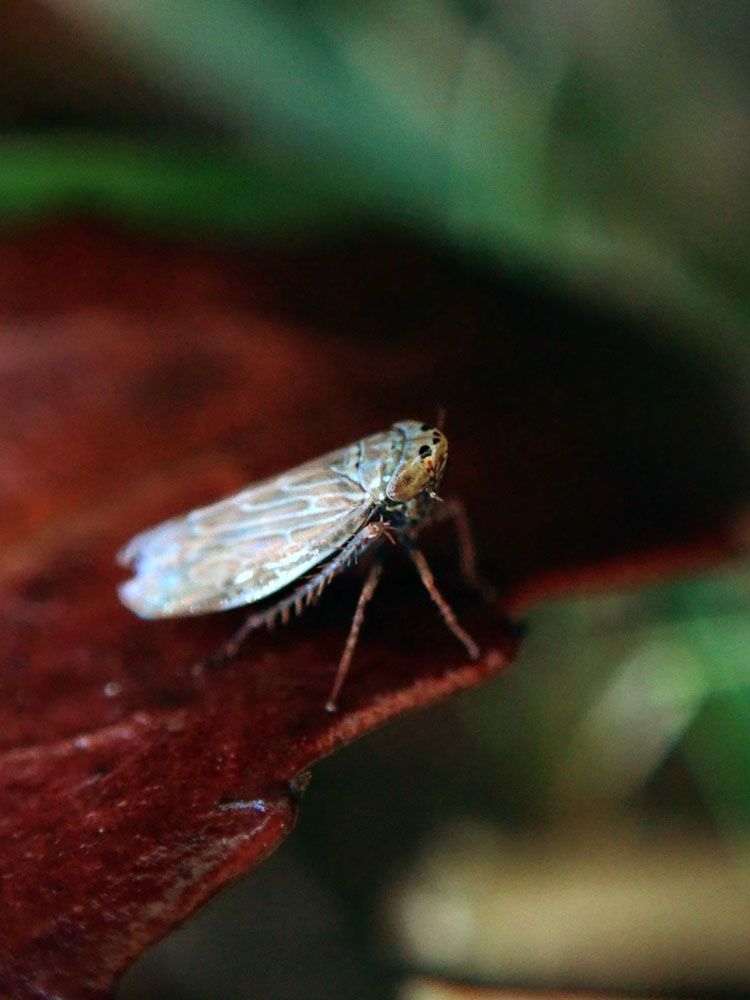
Beet Leafhopper – Eutettix tenellus
Beet Leafhopper: Appearance, Territory, Damage, and Life Cycle
Latin Name: Circulifer Tenellus
Appearance: The beet leafhopper, commonly known as Neoaliturus tenellus, is a species of leafhopper in the order Hemiptera that belongs to the Cicadellidae. The leaf hopper is a little insect that is 3-3.5 mm in length and is usually greenish-yellow, brown, or olive in color. If the leaf hopper develops in cooler temperatures, it may have darker patterns on its wings, pronotum, abdomen, and head. The body’s overall form has been characterized as “wedge-shaped,” with the body tapering down near the insect’s posterior end. The insect’s head is broader than the pronotum and has prominent eyes and a curved anterior border. The presence of plates on males is another distinctive trait of this species.
Hosts Plants: Potato is a food source for many species of leafhoppers (Hemiptera: Cicadellidae). They can cause direct harm by feeding or indirect damage through the transmission of infections like viruses and phytoplasmas.
Territory: It is found in Africa, Asia, Europe, North and Soth America
Damage Insect Cause: While nymph and adult eating causes some harm, the beet leafhopper is a major pest because it spreads the Beet curly top Geminivirus. Plants with curly tops become yellow and cease growing. The leaves curl upward and become purple. The leaves and stems stiffen. Plantings in the spring are the most vulnerable. The bug migrates from overwintering hosts in the foothills and is mostly an issue on the west side.
Insecticides used in affected areas to suppress beet leafhoppers and slow the development of the curly top disease may prevent some infield spread, but infected plants will not recover. A systematic pesticide treatment may have some effect in locations where beet leafhopper infections occur on a yearly basis. Beet leafhopper numbers are at their peak during years when rainfall encourages the growth of their weed hosts in the foothills.
Life History and Habits: The beet leafhopper’s life cycle is divided into three stages: eggs, nymphs, and adults. During development, the insects go through 5 separate molts, resulting in 5 instars before reaching maturity. The growth patterns in the size of the instars follow a sigmoidal curve, which implies that the rate of growth reduces as the instars reach adulthood.
Adult BLHs are little insects that are normally yellowish or greenish in appearance. They develop some dark markings dorsally in the fall and become mostly dark in the winter. Adults have long, thin back legs and will leap away if they are startled. In early spring, adults go into fields in quest of a suitable host and begin to feed on and deposit eggs on host plants.
The eggs are elongated and somewhat curved and are pale to yellowish in hue. Females lay eggs one at a time in the tissue of the leaves and stems. Newly emerging nymphs are translucent to white at first but become greenish after a few hours. There are five nymphal instars, with the latter instar having black, red, and brown spots on the thorax and abdomen. BLH produces three generations every year on average. BLH can complete up to five generations in warmer climates.
